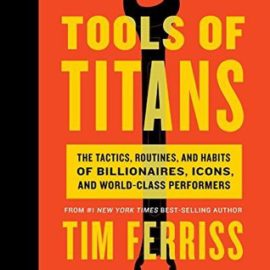Want to learn the ideas in The 4 Disciplines of Execution better than ever? Read the world’s #1 book summary of The 4 Disciplines of Execution by Sean Covey, Chris McChesney, Jim Huling here.
Read a brief 1-Page Summary or watch video summaries curated by our expert team. Note: this book guide is not affiliated with or endorsed by the publisher or author, and we always encourage you to purchase and read the full book.
Video Summaries of The 4 Disciplines of Execution
We’ve scoured the Internet for the very best videos on The 4 Disciplines of Execution, from high-quality videos summaries to interviews or commentary by Sean Covey, Chris McChesney, Jim Huling.
1-Page Summary of The 4 Disciplines of Execution
Overview
The 4 Disciplines of Execution is a book that teaches businesses how to succeed. It focuses on the commitments made by companies, and it helps them achieve those goals. The key to success in any company is for employees to be held accountable for their tasks, but not overwhelmed with new projects and responsibilities.
The first step is to identify one or two goals that would have the most significant impact on your business. These are things you can achieve in a few years. In the second step, these goals must be broken down into leading indicators that predict whether those goals will happen. The third step is creating a scoreboard so everyone can see how well they’re doing. The final step is for each person to report his or her progress toward their goal and leading indicator every week at a meeting with other employees who are working on similar projects, then discuss what needs to happen next week.
The four disciplines of execution are critical to the success of any business. It’s important for leaders to define their WIGs and lead measures, as well as train employees on how to implement these new strategies. Once the company has launched its plan, it must follow up with regular coaching sessions and quarterly assessments. FranklinCovey has helped many companies use these four disciplines in order to achieve their goals successfully.
Key Takeaways
The biggest obstacle to achieving goals in business is the everyday activities that are urgent but not important. The first step to pursuing a goal is narrowing down your list of goals so you can focus on only one or two of them. You need to set a time limit for each goal and also decide what exactly needs to be done by when.
In order to achieve an impactful goal, leaders need to make sure that it’s a WIG (wildly important goal). A WIG is something that has a big impact and gets input from both the leader and team members. It should also be measurable with regards to what impact the team and its leader can have on it.
The second step in execution is to identify lead measures that employees can affect and will predict progress toward the goal.
Lead measures are either specific behaviors or the outcomes of those behaviors. They must be high-impact, ongoing processes.
The third discipline of execution is to create a simple and comprehensible scoreboard that shows progress toward the wildly important goal. It’s also imperative for employees to keep track of their progress, celebrate when they win, and be held accountable by someone who updates the scoreboard regularly.
The fourth discipline is to hold weekly meetings where employees are held accountable for their progress on the lead measures.
The four disciplines are the key to implementing a WIG. The leader is responsible for this, and it’s important that they take the lead in defining the WIG and lead measures. They must also train their team members on these concepts, launch initiatives based on them, provide continuous coaching to their employees, and monitor progress every three months.
The leader is the one who can make or break a plan. He/she must be consistent, accountable, and focused on making sure that everything goes smoothly.
Key Takeaway 1: The chief obstacle to sustaining progress toward goals in a business is the whirlwind of everyday activity that is more urgent but less important.
Many special projects in business don’t last long enough to accomplish their goals because they are difficult to execute. They get buried under the daily whirlwind of activity and can be forgotten about. Instead of developing programs or strategies for managing the whirlwind, it’s better to make new projects so easy that they take very little time out of your day, which will allow you to still finish all other tasks.






